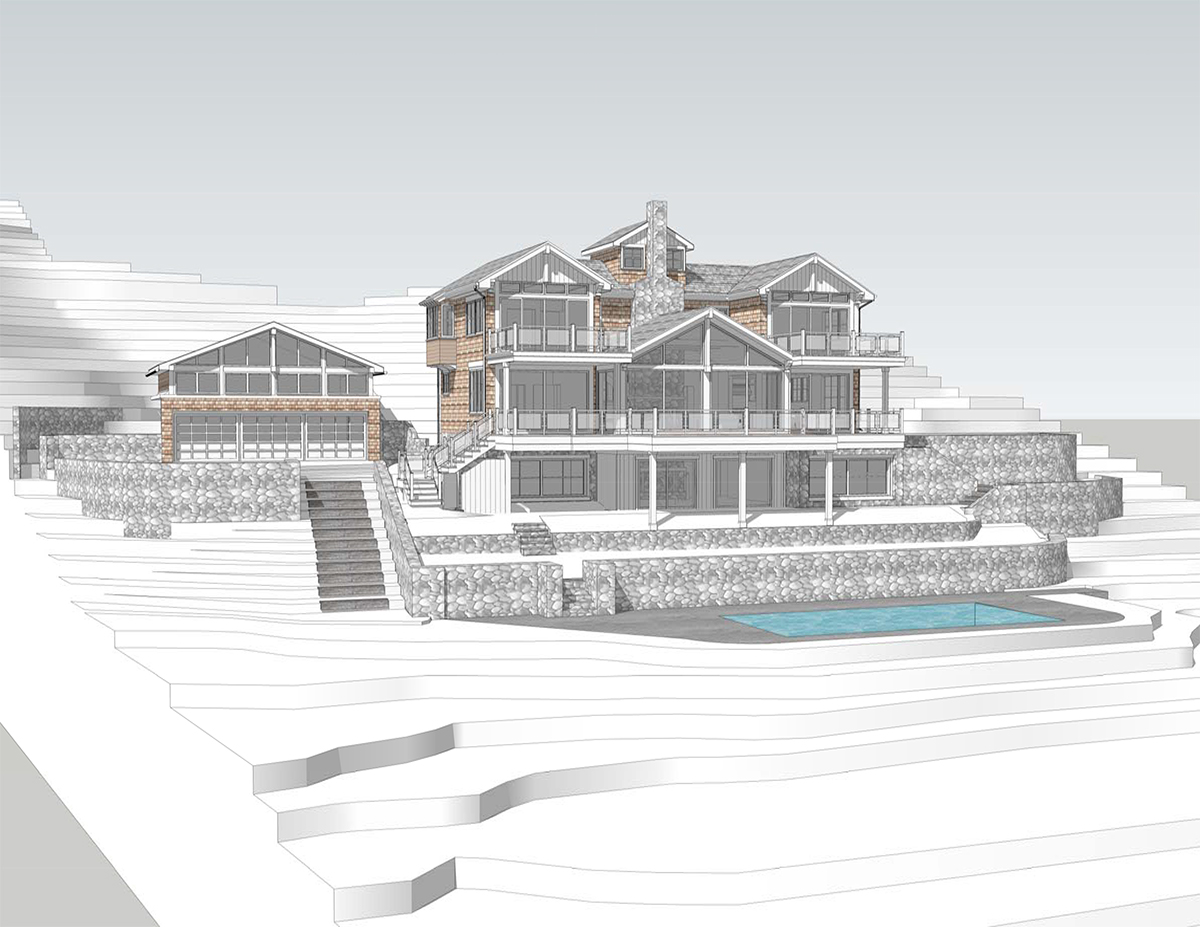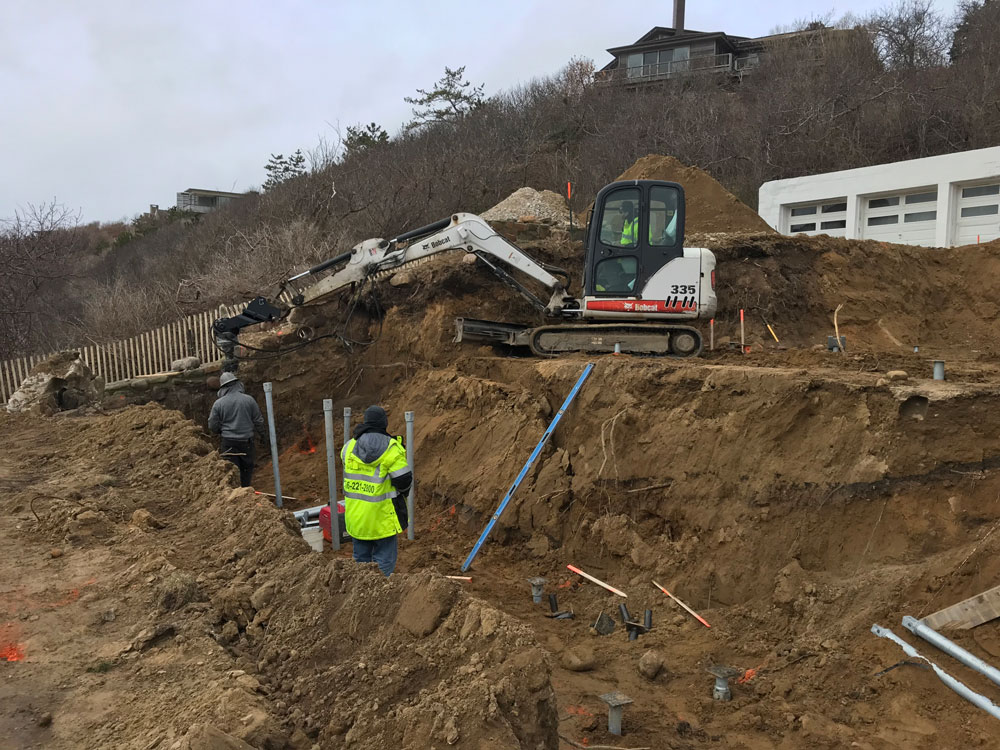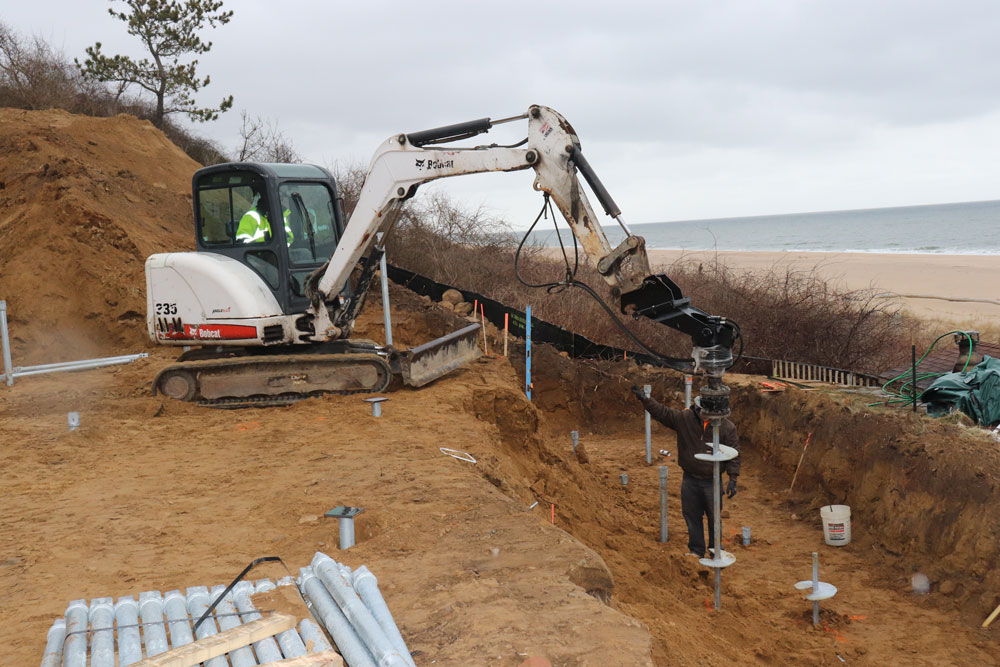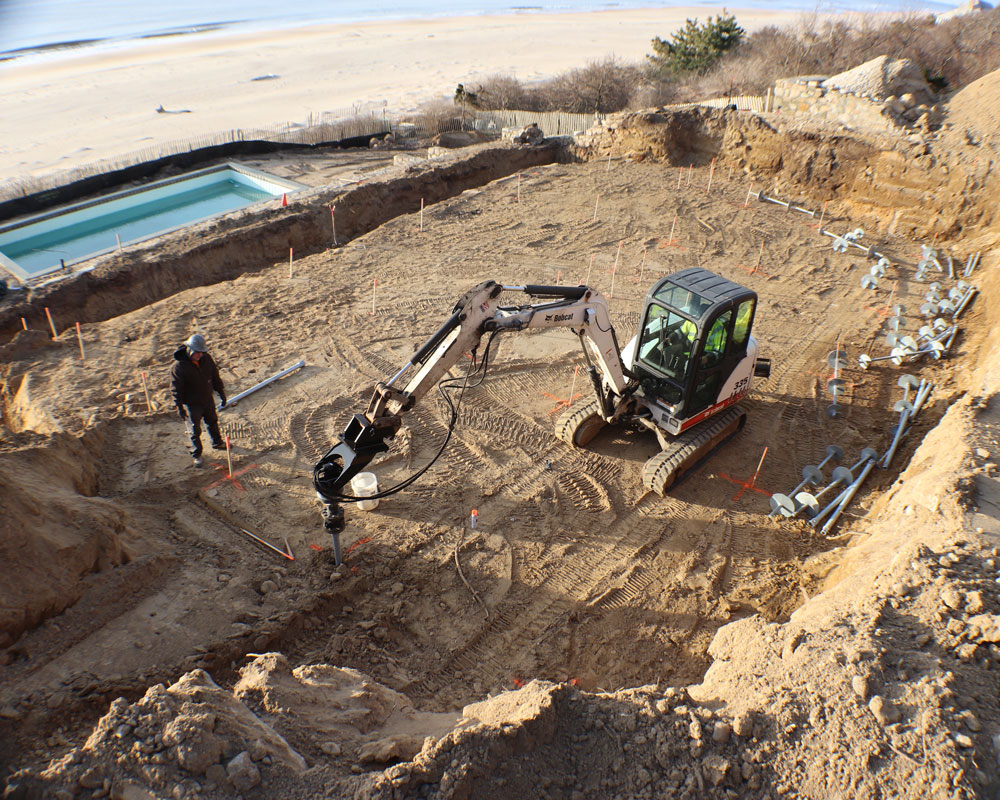Case Study Location:
- Montauk,
- New York
- Case Study Topic: Foundation Underpinning
Project Specs:
- Location: Montauk, NY
- Certified Installer: FSR
- Architect of Record: Pamela Glazer Architect
- General Contractor: Men at Work Construction
- Helical Pile Specifications: – 80 MacLean Power Systems (MPS) Helical Piles – D7 (1.5″ Round Corner Square) Lead w/ 10″, 12″, 14″ Dia. Helices on a 7′ Shaft w/ P28 (2.875″ x 0.203″ Pipe Shaft) Extensions – Average Depth of Helical Piles: 18′ – Minimum Req’d Installation Torque of Helical Piles: 3,000 ft-lbs
- Ultimate Load(s): 30 kips (Compression)
A celebrity was looking to reside in a scenic area of Long Island. With that in mind, they chose to build a new home overlooking the Atlantic Ocean in Montauk. Since the property chosen was located in a FEMA designated flood zone, the dwelling was required to be designed to protect against possible flooding and storm surge.
As per that design, FSR was contracted to install 80 MacLean Power Systems (MPS) helical piles, consisting of 1.5” round corner square shaft (RCS) leads combined with 2.875” diameter pipe extensions. The site presented installation challenges due to its extremely varied elevations from the front to the back. This necessitated the use of specialized installation equipment; fortunately, FSR was able to easily provide the required installation equipment from their vast fleet.
Once the pile locations were laid out on the site it became apparent that several piles were located on top of the existing retaining wall. The Engineer of record was consulted and the piles were relocated to a more suitable location. All of the helical piles were successfully installed over the course of two phases, the first phase was for the new residence, and the second phase was for the new retaining walls. These MPS helical piles were installed to an average depth of 18’ and a minimum torque of 3,000 ft-lbs.




